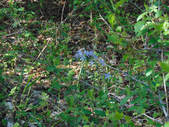
These problems are compounded when native plants are replaced with non-native species in landscape plantings. The continual use of a limited palette of non-native plants readily available across the U.S. had produced a homogenized landscape susceptible to pests and diseases. Non-native species often require large amounts of water, fertilizer and herbicides for their maintenance, and those that escape cultivation and become aggressive often out-compete native plants for resources.
While preserving natural stands of native plants is important, you can help reestablish native plant communities in your yard and community by choosing to landscape with native plants as well. Regardless of the scale of the project, you can help conserve water and other natural resources while restoring and celebrating your region’s character.
But what is a plant without a pollinator?
According to the Pollinator Partnership, between 75% and 95% of all flowering plants on the earth need pollinators. Pollinators provide pollination services to over 180,000 different plant species and more than 1200 crops. That means that 1 out of every three bites of food you eat is there because of pollinators.
During National Wildflower Week, reflect on the plants in your region and the amazing, nearly invisible, ecosystem service that is a precious resource. The ecosystem requires attention and support. As you plant this spring, help pollinators and native plants survive. We depend on them!
 RSS Feed
RSS Feed